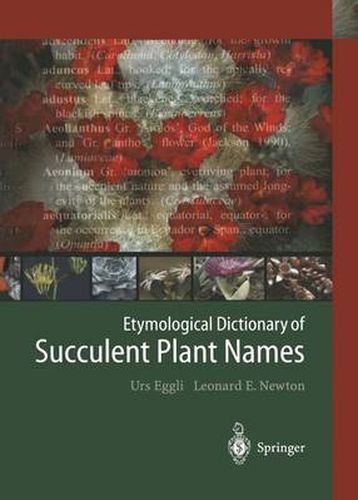Readings Newsletter
Become a Readings Member to make your shopping experience even easier.
Sign in or sign up for free!
You’re not far away from qualifying for FREE standard shipping within Australia
You’ve qualified for FREE standard shipping within Australia
The cart is loading…






This title is printed to order. This book may have been self-published. If so, we cannot guarantee the quality of the content. In the main most books will have gone through the editing process however some may not. We therefore suggest that you be aware of this before ordering this book. If in doubt check either the author or publisher’s details as we are unable to accept any returns unless they are faulty. Please contact us if you have any questions.
Names are important elements to handle the diversity of items in daily life - persons, objects, animals, plants, etc. Without such names, it would be difficult to attach information to such items and to communicate information about them, and names are usually used without giving them much thought. This is not different for plants. When dealing with plants, however, it soon becomes apparent that the situation is somewhat more complex. Botanists use Latin names to bring order into the vast diversity, while everyday usage resorts to vemacular or popular names. As practical as these vernacular names are (it is not suggested that you should ask your greengrocer for a kilo gram of Solanum tuberosum or Musa paradisiaca subsp. sapientum), their most important draw back is the fact that they vary widely, not only from one language to another but also from coun try to country, even from region to region within a large country. More importantly, vemacular names in any given language are usually only available for the plants growing locally, or for plants of some special importance, such as crops and vegetables, medicinal plants, or important garden plants. For all other plants, the Latin names used by botanists and other scientists have to be employed. Such names often appear complicated or even awkward to the ears of those not accustomed to them.
$9.00 standard shipping within Australia
FREE standard shipping within Australia for orders over $100.00
Express & International shipping calculated at checkout
This title is printed to order. This book may have been self-published. If so, we cannot guarantee the quality of the content. In the main most books will have gone through the editing process however some may not. We therefore suggest that you be aware of this before ordering this book. If in doubt check either the author or publisher’s details as we are unable to accept any returns unless they are faulty. Please contact us if you have any questions.
Names are important elements to handle the diversity of items in daily life - persons, objects, animals, plants, etc. Without such names, it would be difficult to attach information to such items and to communicate information about them, and names are usually used without giving them much thought. This is not different for plants. When dealing with plants, however, it soon becomes apparent that the situation is somewhat more complex. Botanists use Latin names to bring order into the vast diversity, while everyday usage resorts to vemacular or popular names. As practical as these vernacular names are (it is not suggested that you should ask your greengrocer for a kilo gram of Solanum tuberosum or Musa paradisiaca subsp. sapientum), their most important draw back is the fact that they vary widely, not only from one language to another but also from coun try to country, even from region to region within a large country. More importantly, vemacular names in any given language are usually only available for the plants growing locally, or for plants of some special importance, such as crops and vegetables, medicinal plants, or important garden plants. For all other plants, the Latin names used by botanists and other scientists have to be employed. Such names often appear complicated or even awkward to the ears of those not accustomed to them.